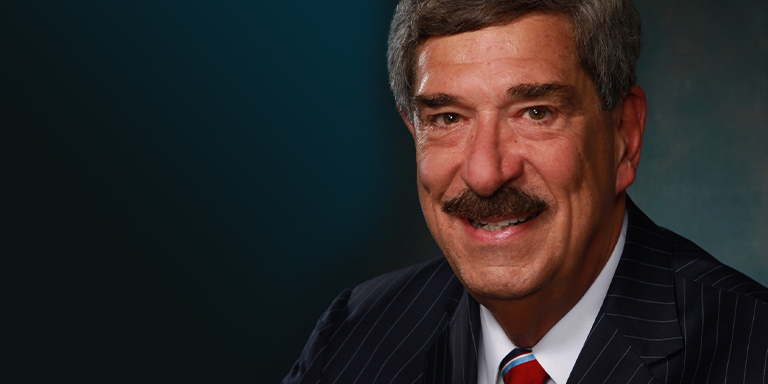SHARE: If there has been a common theme to most of the conversations I have had across the country this year, it is a recognition that while change is inevitable, there has been a significant amplification (or at least an enhanced recognition) of change over the past couple of years. NASBA, like any other association or business, is impacted by unanticipated changes brought on, in large part, because of the Coronavirus pandemic. While the pandemic has certainly been the catalyst for changing the way we work and live, other causes including inflation, changes in staff expectations, and other stimuli are having a pronounced impact on what I describe as human behavior. We have spoken and written volumes regarding the “pipeline” issue. Some elements of the decreasing numbers of CPA candidates are well outside our ability to control or remedy. As an example, according to the U.S. Census Bureau, the number of U.S. births has been declining every year since 2008 (except 2014). In the two decades from 1999 and 2019, the number of daily births declined an average of nearly 0.40 percent a year. The pace of decline nearly doubled between 2010 and 2019, when the number of daily births dropped on average 0.96 percent a year. However, the decrease has dramatically increased since the pandemic with nearly a 7.6 percent decrease in U.S. births in 2020 as compared to 2019, an example of human behavior impact. I am not trying to bore you with statistics, but it is important to understand the decreasing number of CPA candidates correlates to the decreasing number of college students, which continues to fall because of declining birthrates for over a decade. A more recent phenomena (also likely impacted by COVID-19) is even more challenging. According to the National Student Clearinghouse Research Center, high schoolers applying to colleges, year over year, fell by 3.6 percent in fall 2020 and by 3.1 percent in fall 2021. Total undergraduate enrollment declined 6.6 percent from fall 2019 to fall 2021, representing a loss of just over a million students. While the shrinking demographic is part of the loss, the behavior, and the numbers of high school graduates deciding to join the work force versus attending colleges continues to grow. It is critical that as we develop strategies for increasing the number of candidates seeking to become CPAs, we must truly grasp all elements of the obstacles we face and create strategies that make sense. NASBA and State Boards of Accountancy have the primary responsibility to attract and maintain an adequate number of practicing CPA licensees to serve the needs of the public we protect. The demographic data illustrates the challenges we face, but also is indicative of our need to focus on the opportunities we can leverage. As an example, each year there are thousands of graduates of accounting programs across the country who never sit for the CPA Examination. Another cohort of graduates initially sit for the CPA Examination but do not complete the process of passing four parts. There are lots of reasons why both occur that we need to better understand. NASBA is currently working to mine candidate data to ascertain the numbers and identities of candidates who began but did not finish the CPA Examination process, so that we can develop strategies to encourage candidates to complete and/or reenter the Examination pipeline. In our discussions with Boards of Accountancy, State CPA Societies and the AICPA, we all agree that we need to do more to promote and encourage high school students to consider a CPA career. This activity is much more natural to AICPA and State CPA Societies, but we all need to be in harmony with this effort. We are aware that colleges and universities, particularly professors, play a key role in promoting the profession. Some professors have encouraged students to sit of the CPA Examination and have nurtured the prospect and value of becoming a CPA, while others have taken the position of being neutral as to the ultimate decisions of their students. They too need to think differently about their approach. As is the case with almost every issue, bucks get passed and blame is placed on others, in this case, on the regulatory processes. I often hear that the primary cause of the decrease in CPA Examination candidates is the 150-hour requirement, or that the application process is too difficult or restrictive and that the cost of the CPA Examination is too high, and the pass rate is too low. While every step of the process is open to review and change, surveys indicate that the Examination and licensure requirements are not the cause of decreasing numbers of candidates. That being said, we should be looking for new opportunities to make the process more attractive. One idea, which is gaining momentum, is the increased allowance of a high-quality internship for college credit that gives students cost savings, experience, and career opportunities. While most states allow limited internship college credit, there is little uniformity across the states. Some states, such as New Jersey, have begun exploring this opportunity, and the AICPA has recently announced the consideration of a national program. We explored the idea with state board executive directors at their recent annual conference and discussions on the enhancement of internships was well received. As I have laid out, there are controllable and non-controllable factors we must consider. We also cannot ignore the ‘elephant in the room,’ which is the fact that starting salaries for CPAs have not kept up with other professions and academic degrees. Also, work life balance for new CPAs remains an issue. Bottom line is that we all have to participate in determining solutions. Demographics have changed, expectations have changed, and there is increased competition for the best and brightest talent. We must re-think the future! Be safe and healthy, my friends. Semper ad meliora (Always toward better things). — Ken L. Bishop, President & CEO |

